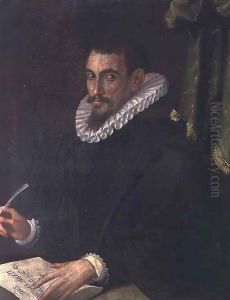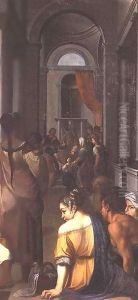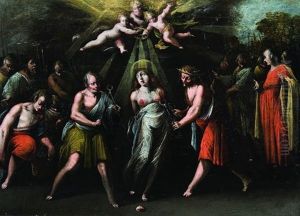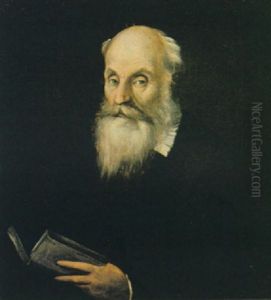Ercole dell' Abbate Paintings
Ercole dell'Abbate, born in 1509 in Bologna, Italy, was an influential figure in the Italian Renaissance art movement. He belonged to a period where the arts flourished under the patronage of wealthy families and the church, contributing to the cultural rebirth that characterized the era. Ercole was part of the notable Abbate family, which played a significant role in the cultural and artistic life of Bologna during the 16th century. Despite the prominence of his family, detailed records of his early life and training are sparse, which is not uncommon for artists of that period. It is believed, however, that he was exposed to the vibrant artistic environment of Bologna from a young age, which nurtured his talents and interests.
Ercole dell’Abbate’s career is marked by his contributions to the development of Mannerism, a style that emerged towards the end of the High Renaissance. This style was characterized by artificiality, grace, and elegance, moving away from the proportional and harmonious compositions of earlier Renaissance works. Ercole's paintings often depicted religious and mythological themes, imbued with a sense of movement and complexity that was typical of the Mannerist aesthetic. His use of vivid colors and dynamic compositions made his work stand out among his contemporaries.
Despite his artistic talents, Ercole did not gain the same level of fame as some of his peers, such as Raphael or Michelangelo. However, his works were still sought after by patrons who appreciated his unique approach to the Mannerist style. Throughout his career, Ercole worked on several significant commissions for churches and noble families in Bologna and other Italian cities, contributing to the rich tapestry of Renaissance art. His legacy is preserved in various Italian museums and churches, where his paintings continue to be admired for their beauty and technical skill.
Ercole dell’Abbate died in 1563 in Bologna. His death marked the end of a career that, while not as celebrated as some of his contemporaries, played a crucial role in the development of Mannerist painting in Italy. Today, art historians recognize Ercole dell'Abbate as an important figure in the Italian Renaissance, whose works contribute to our understanding of the period's artistic evolution. His paintings continue to be studied and appreciated for their contribution to the rich cultural heritage of Italy.



